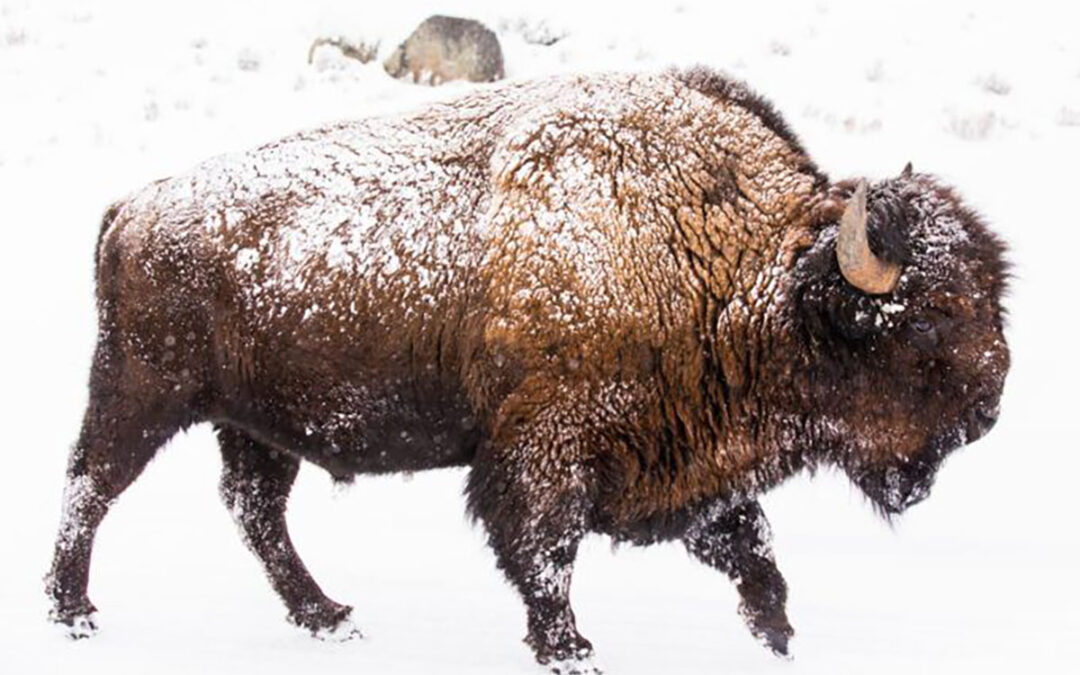Image by Daniel Lloyd Blunk-Fernández
Pointing to the danger to residents, landowners, other hunters and the public during the bison hunt/cull this year, the Alliance for the Wild Rockies recently sent a letter to Mary Erickson, Supervisor of the Custer Gallatin National Forest, asking her to close Beattie Gulch to hunting.
This 30 second video shows the slaughter that took place last year. (warning: graphic content).
Beattie Gulch is on the Custer Gallatin National Forest nestled between Yellowstone National Park and Gardiner, Montana. The area acts as a natural funnel that concentrates bison into the narrow gulch where an annual bison hunt/cull/slaughter takes place as they migrate out of Yellowstone National Park during spring calving season. In search of lower elevation areas with fresh forage, more than 1,100 bison were killed at the site last year.
Beattie Gulch is also near private homes and concerns for safety have been raised by landowners and residents that live in the immediate area. That’s why we’re requesting the Forest Service implement an emergency hunting closure, a step it has taken in the past. We believe it’s a responsible and prudent action the Forest Service should take to protect public safety now instead of waiting until someone gets killed.
The US Department of Agriculture, under which the Forest Service operates, spends billions of dollars annually to protect food, water, plants, animals and people from a wide range of risks. Given the significant risk of high-powered rifle bullets flying close to people in local homes, other hunters, local businesses and those moving outdoors on private and public land, closing the Gulch to hunting makes sense.
The risk is very real. Nez Perce tribal hunter, Jackson Wak Wak, was struck by a stray bullet during a hunt earlier this year that ricocheted from a hunter 400 yards away. Residents of Gardiner have complained to the Sheriff and the Forest Service about bullets whizzing by their house and the agencies have been non-responsive.
This is not some radical new request since there is precedent for closing Beattie Gulch to hunting. In 2011 the Forest Service did just that to protect public safety. Given the vast expansion of the Tribal involvement in the hunt/cull/slaughter earlier this year, the concerns over public safety have only grown, as is well documented.
Nor does this have anything to do with politics but from a buffalo’s perspective, it does matter who’s in office or where the border of Yellowstone National Park is. The bison are simply following eons-old migratory patterns down the Yellowstone River to their winter range and more suitable calving grounds. But since Montana Governor Gianforte refused to set a quota last year for how many Yellowstone bison can be killed, more than 1,100 bison didn’t make it more than a few feet past the firing line before being gunned down.
As Benjamin Franklin famously said, ‘An ounce of prevention is worth a pound of cure.’ The Forest Service should take that good advice, follow public safety protocol and precedent, and close Beattie Gulch to buffalo hunting before more buffalo are shot.
Yellowstone National Park and the National Forests belong to all Americans. Please consider contacting the Chief of the Forest Service, Randy Moore,, Yellowstone Superintendent Cam Sholly, and your members of Congress to ask them to support closing Beattie Gulch to hunting before the next buffalo slaughter starts and someone gets killed.
Please also consider donating to the Alliance to save Yellowstone’s Wild Buffalo.
